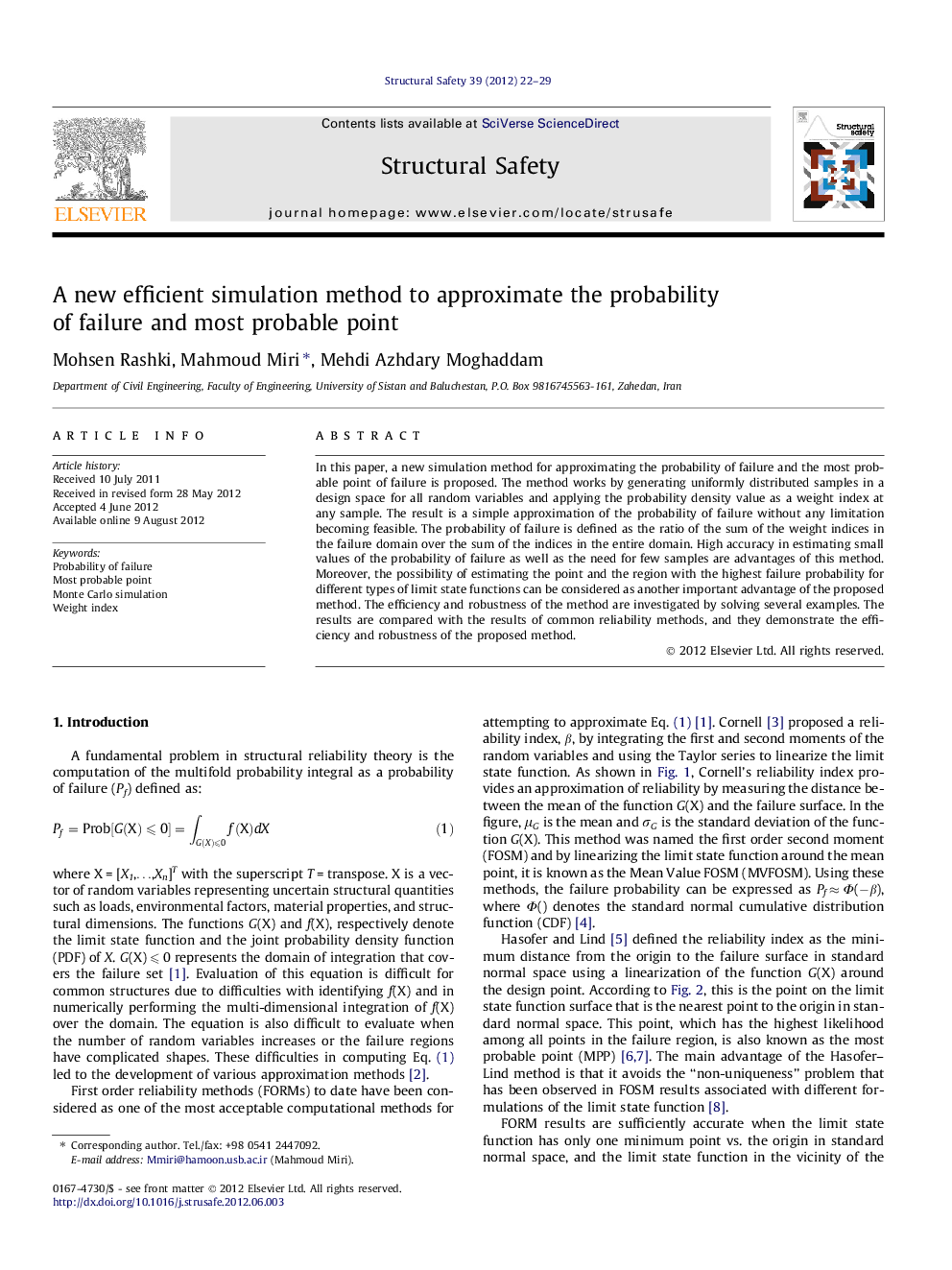| Article ID | Journal | Published Year | Pages | File Type |
|---|---|---|---|---|
| 307636 | Structural Safety | 2012 | 8 Pages |
In this paper, a new simulation method for approximating the probability of failure and the most probable point of failure is proposed. The method works by generating uniformly distributed samples in a design space for all random variables and applying the probability density value as a weight index at any sample. The result is a simple approximation of the probability of failure without any limitation becoming feasible. The probability of failure is defined as the ratio of the sum of the weight indices in the failure domain over the sum of the indices in the entire domain. High accuracy in estimating small values of the probability of failure as well as the need for few samples are advantages of this method. Moreover, the possibility of estimating the point and the region with the highest failure probability for different types of limit state functions can be considered as another important advantage of the proposed method. The efficiency and robustness of the method are investigated by solving several examples. The results are compared with the results of common reliability methods, and they demonstrate the efficiency and robustness of the proposed method.
► We proposed a new method for approximating the probability of failure and MPP. ► We generate samples for all variables uniformly. ► Each sample gets a weight index based on probability density function of variables. ► The comparison of new method with other methods shows it is more efficient and robust.
